Next SLS countdown rehearsal scheduled for June 19
Monday, 30 May 2022 01:20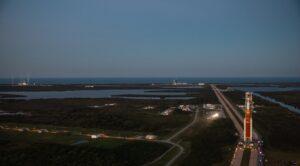
NASA has tentatively scheduled the next attempt to fuel the Space Launch System and go through a practice countdown for June 19, two weeks after the vehicle returns to the launch pad.
Why Did Mars Dry Out? New Study Points To Unusual Answers
Sunday, 29 May 2022 10:47 Mars once ran red with rivers. The telltale tracks of past rivers, streams and lakes are visible today all over the planet. But about three billion years ago, they all dried up - and no one knows why.
"People have put forward different ideas, but we're not sure what caused the climate to change so dramatically," said University of Chicago geophysical scientist Edwin Kite. "We'd really like
Mars once ran red with rivers. The telltale tracks of past rivers, streams and lakes are visible today all over the planet. But about three billion years ago, they all dried up - and no one knows why.
"People have put forward different ideas, but we're not sure what caused the climate to change so dramatically," said University of Chicago geophysical scientist Edwin Kite. "We'd really like Up, Up and Away - Sols 3487-3490
Sunday, 29 May 2022 10:47 Our intrepid rover engineers again successfully navigated Curiosity a little higher up Mount Sharp (~5 m) and ~40 m on the ground, away from our previous location. The terrain beneath the rover included striated, dusty bedrock and sand ripples with coarse lag deposits.
As a member of the geology/mineralogy planning team and the APXS payload uplink lead today, I chose several interesting ar
Our intrepid rover engineers again successfully navigated Curiosity a little higher up Mount Sharp (~5 m) and ~40 m on the ground, away from our previous location. The terrain beneath the rover included striated, dusty bedrock and sand ripples with coarse lag deposits.
As a member of the geology/mineralogy planning team and the APXS payload uplink lead today, I chose several interesting ar New meteor shower? How many meteors will I see, really?
Sunday, 29 May 2022 10:47 Astronomers are excited about the possibility of a new meteor shower May 30-31. And that excitement has sparked a lot of information about the tau Herculids. Some has been accurate, and some has not.
We get excited about meteor showers, too! But sometimes events like this don't live up to expectations - it happened with the 2019 Alpha Monocerotid shower, for example. And some astronomers p
Astronomers are excited about the possibility of a new meteor shower May 30-31. And that excitement has sparked a lot of information about the tau Herculids. Some has been accurate, and some has not.
We get excited about meteor showers, too! But sometimes events like this don't live up to expectations - it happened with the 2019 Alpha Monocerotid shower, for example. And some astronomers p Commercial Space Exec: Hands-On Work Can Launch Careers
Sunday, 29 May 2022 10:47 Tyler Grinnell ('08) worked at Kennedy Space Center while he was still an Aerospace Engineering student at Embry-Riddle, juggling a full load of classes.
"That was a dream come true for me to be able to work on the space shuttle program while I was just out of my sophomore year," he said, at the university's latest Presidential Speaker Series event.
That real-world experience propell
Tyler Grinnell ('08) worked at Kennedy Space Center while he was still an Aerospace Engineering student at Embry-Riddle, juggling a full load of classes.
"That was a dream come true for me to be able to work on the space shuttle program while I was just out of my sophomore year," he said, at the university's latest Presidential Speaker Series event.
That real-world experience propell OneWeb satellite to be deorbited at the end of its active lifetime
Sunday, 29 May 2022 10:47 The world's first mission to remove several small telecommunications satellites from orbit once they reach the end of their operational service is about to start building and testing its prototype spacecraft.
British-based in-orbit servicing company Astroscale - working in an ESA Partnership Project with satellite operator OneWeb - will begin manufacturing the first commercial "servicer" p
The world's first mission to remove several small telecommunications satellites from orbit once they reach the end of their operational service is about to start building and testing its prototype spacecraft.
British-based in-orbit servicing company Astroscale - working in an ESA Partnership Project with satellite operator OneWeb - will begin manufacturing the first commercial "servicer" p China's space tracking ship departs for 100th mission
Sunday, 29 May 2022 10:47China rolls out rocket for Shenzhou-14 crewed mission
Sunday, 29 May 2022 10:03
China is preparing to launch three astronauts to its Tiangong space station to oversee a crucial phase of construction of the orbital outpost.
The post China rolls out rocket for Shenzhou-14 crewed mission appeared first on SpaceNews.
NASA to reexamine space-based solar power
Saturday, 28 May 2022 16:22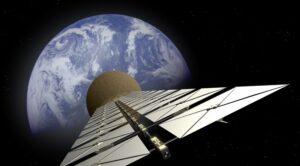
NASA is starting a study to reexamine the viability of space-based solar power, a long-touted solution to providing power from space that may be getting new interest thanks to technological advances and pushes for clean energy.
Starlink approved in Nigeria and Mozambique, says Elon Musk
Friday, 27 May 2022 20:42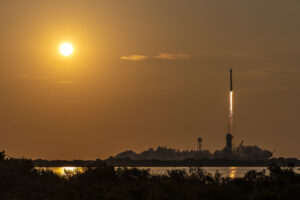
SpaceX said May 27 that Nigeria has joined Mozambique as the first countries in Africa to approve its Starlink broadband services.
The post Starlink approved in Nigeria and Mozambique, says Elon Musk appeared first on SpaceNews.
Ingenuity Adapts for Mars Winter Operations
Friday, 27 May 2022 17:14 As detailed in our last blog post, for the first time in our yearlong extended mission we had a loss of communications with Ingenuity from the downlink of May 3 (Sol 427) and May 4 (Sol 428). After a week of anomaly investigation, two sols dedicated to data collection, and the heroic efforts of the Perseverance and Ingenuity operations teams, I am very happy to report that we have reestablished
As detailed in our last blog post, for the first time in our yearlong extended mission we had a loss of communications with Ingenuity from the downlink of May 3 (Sol 427) and May 4 (Sol 428). After a week of anomaly investigation, two sols dedicated to data collection, and the heroic efforts of the Perseverance and Ingenuity operations teams, I am very happy to report that we have reestablished Ingenuity Mars Helicopter captures video of record flight
Friday, 27 May 2022 17:14 The Ingenuity Mars Helicopter's black-and-white navigation camera has provided dramatic video of its record-breaking 25th flight, which took place on April 18. Covering a distance of 2,310 feet (704 meters) at a speed of 12 mph (5.5 meters per second), it was the Red Planet rotorcraft's longest and fastest flight to date. (Ingenuity is currently preparing for its 29th flight.)
"For our rec
The Ingenuity Mars Helicopter's black-and-white navigation camera has provided dramatic video of its record-breaking 25th flight, which took place on April 18. Covering a distance of 2,310 feet (704 meters) at a speed of 12 mph (5.5 meters per second), it was the Red Planet rotorcraft's longest and fastest flight to date. (Ingenuity is currently preparing for its 29th flight.)
"For our rec Ball and Raytheon to develop NOAA ocean sensors
Friday, 27 May 2022 16:58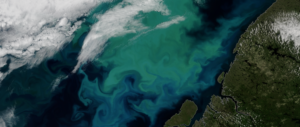
Ball Aerospace and Raytheon Intelligence & Space will begin developing ocean color sensors for the National Oceanic and Atmospheric Administration’s next generation of geostationary weather satellites under contracts announced May 26.
The post Ball and Raytheon to develop NOAA ocean sensors appeared first on SpaceNews.
NASA's Ingenuity Mars Helicopter captures video of record flight
Friday, 27 May 2022 16:46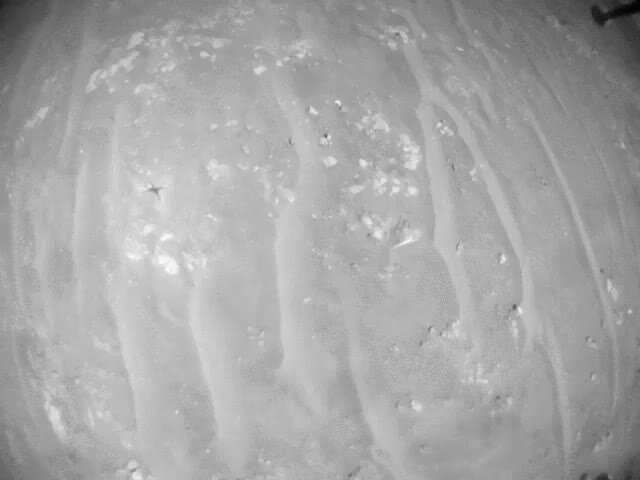
Imagery has come down from Mars capturing a recent flight in which the rotorcraft flew farther and faster than ever before.
The Ingenuity Mars Helicopter's black-and-white navigation camera has provided dramatic video of its record-breaking 25th flight, which took place on April 18. Covering a distance of 2,310 feet (704 meters) at a speed of 12 mph (5.5 meters per second), it was the Red Planet rotorcraft's longest and fastest flight to date. (Ingenuity is currently preparing for its 29th flight.)
"For our record-breaking flight, Ingenuity's downward-looking navigation camera provided us with a breathtaking sense of what it would feel like gliding 33 feet above the surface of Mars at 12 miles per hour," said Ingenuity team lead Teddy Tzanetos of NASA's Jet Propulsion Laboratory in Southern California.
The first frame of the video clip begins about one second into the flight. After reaching an altitude of 33 feet (10 meters), the helicopter heads southwest, accelerating to its maximum speed in less than three seconds. The rotorcraft first flies over a group of sand ripples then, about halfway through the video, several rock fields.
Our Mars rover mission was suspended because of the Ukraine war. What we're hoping for next
Friday, 27 May 2022 14:04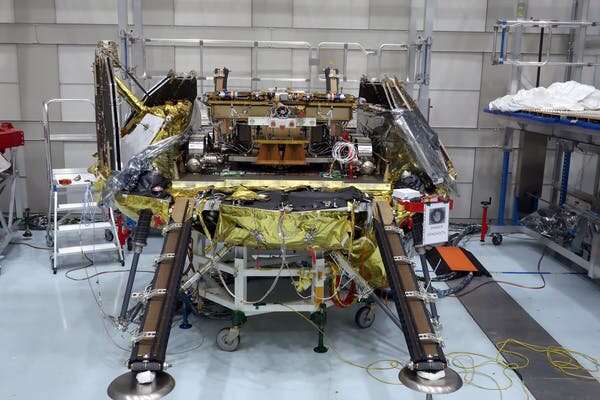
Just a few months ago, we were confidently expecting to launch our rover, Rosalind Franklin, to Mars in September as part of the ExoMars mission, a collaboration between Europe and Russia. The landing was planned for June 2023. Everything was ready: the rover, the operations team and the eager scientists.
The final preparations started in February 21, with part of our team heading to Turin, Italy, to carry out the final alignment and calibration tests. All was going well, though some of the team were slightly delayed by Storm Eunice in the U.K. Three days later, they had nevertheless finished the work—leaving some wonderful data, which would help us decide where Rosalind would drill on Mars. The industry team started packing the rover, which was ready to be shipped to the launch site.
Then, a storm far more powerful and tragic than Eunice descended on Ukraine: Russia's invasion.

